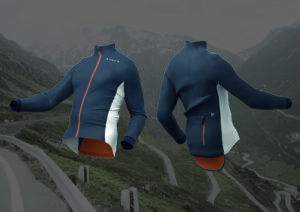
The sportswear and activewear industry is a massive contributor to global environmental issues, ranging from excessive water and energy consumption to harmful chemical emissions.
It’s use of synthetic fibres to produce cheap, fast wicking sportswear has become the norm within the industry rather than looking for alternative environmental alternatives due to cost.
As the world becomes more environmentally conscious, it’s imperative for sportswear brands to transition towards producing sustainable sportswear. This article delves into the concept of sustainable sportswear, emphasising its significance and providing insights into how it can be produced in an eco-friendly manner.
What is Sustainable Sportswear?
Sustainable sportswear is a term used to describe athletic clothing and footwear that has been produced with minimal negative impacts on the environment. This includes minimising the use of natural resources, reducing greenhouse gas emissions, and eliminating harmful chemicals. The key elements of sustainable sportswear production are:
Eco-friendly Materials:
Use of organic, natural and recycled materials: Sustainable sportswear incorporates materials like organic cotton, recycled polyester, and natural fibers such as hemp, merino wool and bamboo. These materials require fewer resources and reduce waste.
Reducing microplastics:
Sportswear manufacturers should consider minimising the shedding of microplastics from synthetic materials like polyester and nylon. While cleaning up the ocean of disused nylon fishing nets and plastic bottles is perceived as a good thing to do, recycling them into tiny fibres that will get washed into the ocean when the garments are laundered totally negates the perceived good done.
Ethical Labour Practices:
Fair wages and working conditions: Sustainability extends to the treatment of the people involved in the production process. Fair wages, safe working conditions, and reasonable working hours are essential for producing sustainable sportswear.
Energy Efficiency:
Use of renewable energy sources: Transitioning to renewable energy sources such as solar or wind power can significantly reduce the carbon footprint of sportswear production.
Energy-efficient manufacturing processes: Implementing energy-efficient technologies and practices in production facilities can lead to reduced energy consumption.
Minimal Waste:
Waste reduction and recycling: Sustainable sportswear brands aim to minimize waste by implementing recycling programs, reusing materials, and creating products designed for durability.
Closed-loop systems: Implementing closed-loop systems ensures that products can be recycled at the end of their life cycle.
Transportation and Packaging:
Sustainable transportation methods: Reducing emissions from shipping through efficient transportation and distribution is crucial.
Minimal and recyclable packaging: Using eco-friendly and minimal packaging materials helps further reduce waste.
Production Methods for Sustainable Sportswear
Material Selection:
Choose eco-friendly fabrics and materials: opt for merino wool, organic cotton, or Tencel and if you need to use synthetics, make sure these are recycled. There is a huge array of sustainable fabrics available, and this area is growing fast. See our guide here for more information.
Sustainable dyeing processes: Implement water-saving and non-toxic dyeing methods, like using natural dyes or low-impact dyes.
Sustainable Manufacturing Processes:
Reduce water usage: Adopt water-saving technologies such as air dyeing and waterless dyeing processes.
Minimize chemical usage: Employ non-toxic alternatives for treatments and finishes, reducing harm to both the environment and workers.
Eco-friendly Design:
Create long-lasting products: Design sportswear with durability in mind, extending product life and reducing the need for replacement. Build better products that cost more but last longer.
Modularity and repairability: Encourage customers to repair and upgrade their sportswear rather than discarding them.
Transparent Supply Chain:
Traceability: Ensure transparency throughout the supply chain, allowing customers to trace the origins of materials and labour.
Ethical certifications: Seek certifications like Fair Trade or GOTS (Global Organic Textile Standard) to confirm ethical production practices.
Circular Economy:
Recycle and repurpose: Establish programs for the collection and recycling of old sportswear products.
Second-hand markets: Promote the resale of used sportswear, encouraging consumers to buy pre-owned items. This is becoming a trend within fashion.
Challenges in Producing Sustainable Sportswear
While the shift towards sustainable sportswear is essential, it comes with challenges, including:
Cost: Sustainable materials and ethical labour practices can increase production costs, which may be passed on to consumers.
Consumer Awareness: Not all consumers are aware of or willing to pay for sustainable sportswear, hindering market growth, however this is becoming less of a barrier as consumer understand the cost of protecting the planet.
Supply Chain Complexity: Implementing sustainable practices across the entire supply chain can be complex, especially for large brands with numerous suppliers.
Limited Eco-friendly Technologies: Some processes and materials required for sportswear production still lack eco-friendly alternatives.
Conclusion
The production of sustainable sportswear is vital for the environment and the well-being of both current and future generations. To successfully produce sustainable sportswear, sportswear brands need to adopt eco-friendly materials, ethical labour practices, energy-efficient processes, minimal waste generation, and sustainable transportation and packaging.
Despite the challenges, the sportswear industry must transition towards sustainability to minimize its environmental footprint and promote a greener future.
By making conscious choices and embracing innovations, the sportswear industry can pave the way for a more sustainable and eco-conscious future.
If you want to create a sustainable sportswear bran, please get in touch here.




